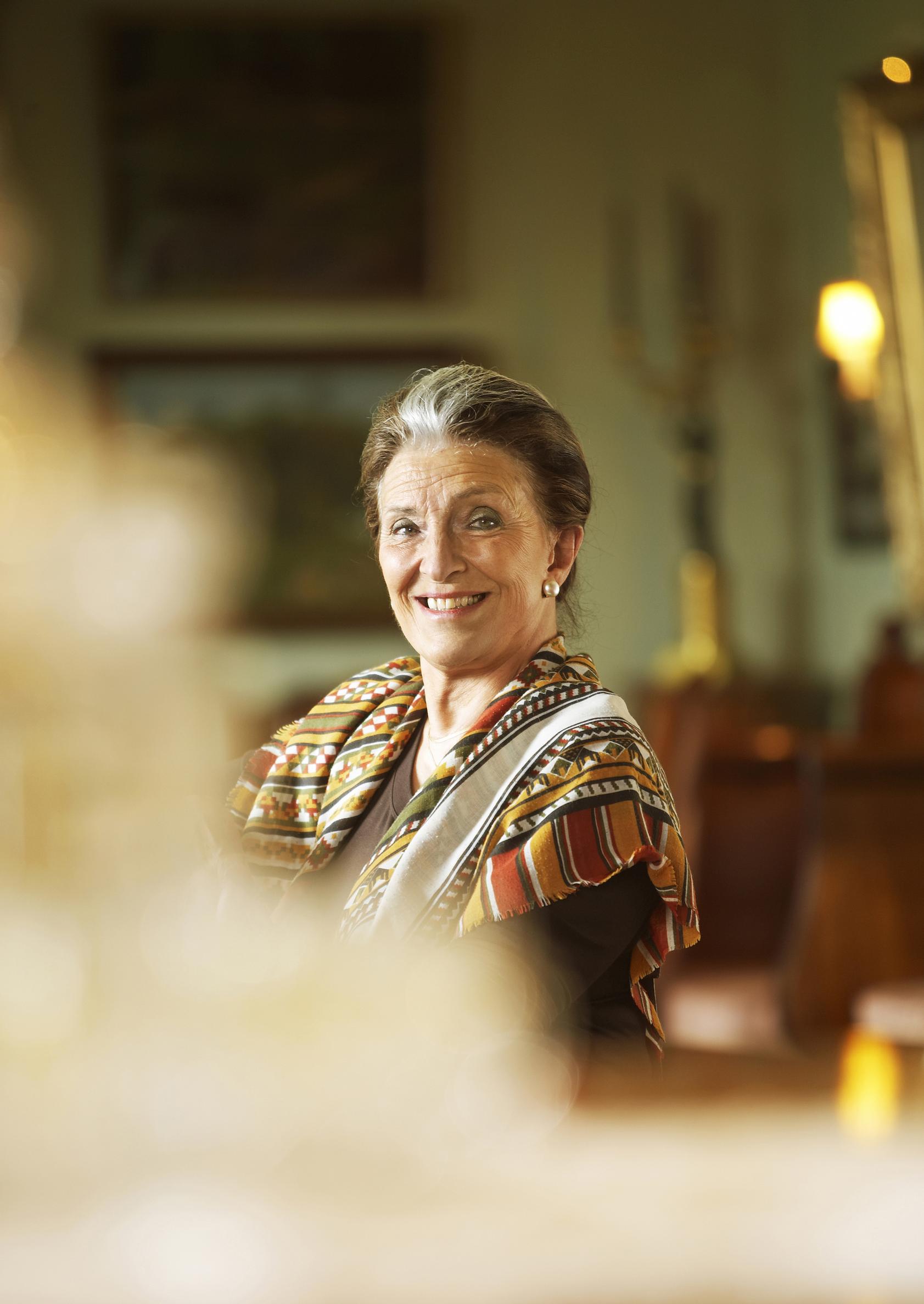
Tamara Aladin’s 1960s captivating glass vases—only her own life story is more magical!
Finnish designer Tamara Aladin created many of Riihimäen Lasi glass factory’s most popular vases, including Cleopatra, Tornado, and Carmen. It’s time to reveal how these vases came to be—and what the life of Aladin, often described as mystical and enigmatic, was really like.
Mystical, enigmatic. That is how Tamara Aladin is often described. Even Andy McConnell uses these words in his authoritative book 20th-century Glass, which highlights a substantial collection of the most significant glass designers of the 1900s.
Tamara Aladin found this characterization somewhat amusing, as she never felt she had disappeared after ending her work as a designer at Riihimäen Lasi, a Finnish glass factory, in the 1970s. Her circle of friends always knew her as a kind-hearted, joyful, and hospitable force of nature who dressed like a fashion icon and had an almost magical connection with animals—she could even feed wild animals from her hand.
For decades, Aladin lived in an old wooden house in Hamina, South-Eastern Finland, where her friends and family were always welcome. She was especially well-known in equestrian circles, as she loved horseback riding, kept her own horses, and supported competitive riders for many years. She learned to ride as a little girl on a finnhorse, naturally without a saddle.
The interior of her Hamina home could have been from 19th-century St. Petersburg. Oriental rugs, mahogany-veneered late Empire furniture, and a large grand piano that eternally awaited a piano tuner stood on her dark brown, cozily creaking plank floors. The furniture was from Aladin’s childhood home, the nearby Poitsila manor.

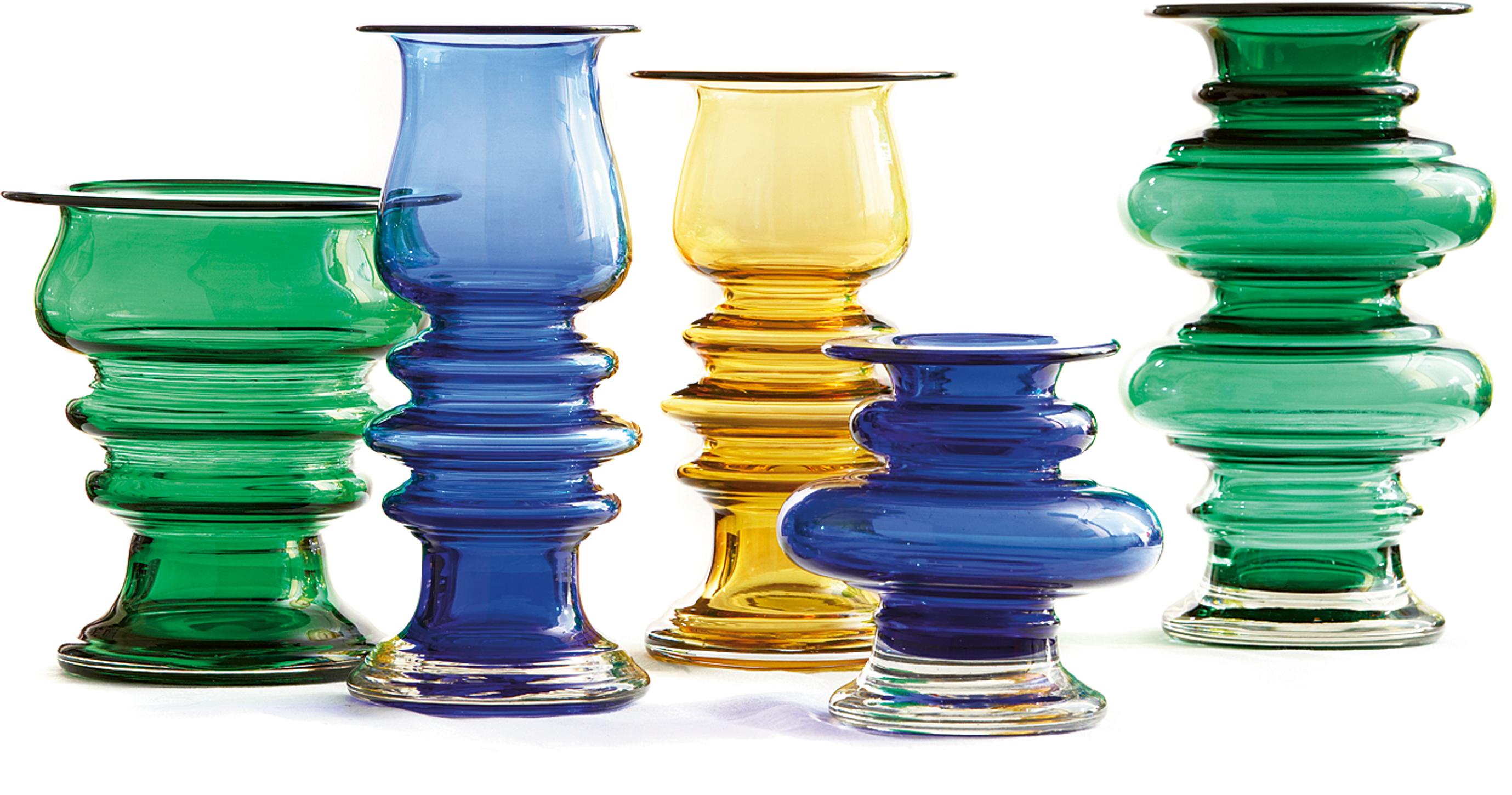
Like something out of a historical novel
At school, Tamara would have received a better grade in art if she had been content to draw frost flowers lesson after lesson. She would also scuffle with the boys, which only resulted in repeated detentions. It wasn’t easy coming from a wealthy family, being Orthodox and Russian-speaking. Of course, everyone in the small town knew her background; but there was also nothing to hide.
Tamara’s grandfather Konstantin came to Finland from Yaroslavl, Russia, after the abolition of serfdom in 1861, and settled in Hamina. There, a merchant named Vasiljev from the same region took the boy under his wing. The penniless young man gradually grew into a sawmill owner and commercial counselor, as did his son. In the 1880s, a grandiose home was built next to the town hall as a sign of their success.
When Tamara was in the sixth grade, her mother of Polish-Russian descent, Stella (née von Werschensky), took her daughter out of school and placed her at the Arabia ceramics factory for a brief apprenticeship. The following spring, her mother sent application papers to the School of Arts and Design in Helsinki and Tamara after them. Tamara passed the selection course and decided then that she would complete these studies as well as she could. There was nothing wrong with her drawing skills—her work was excellent.

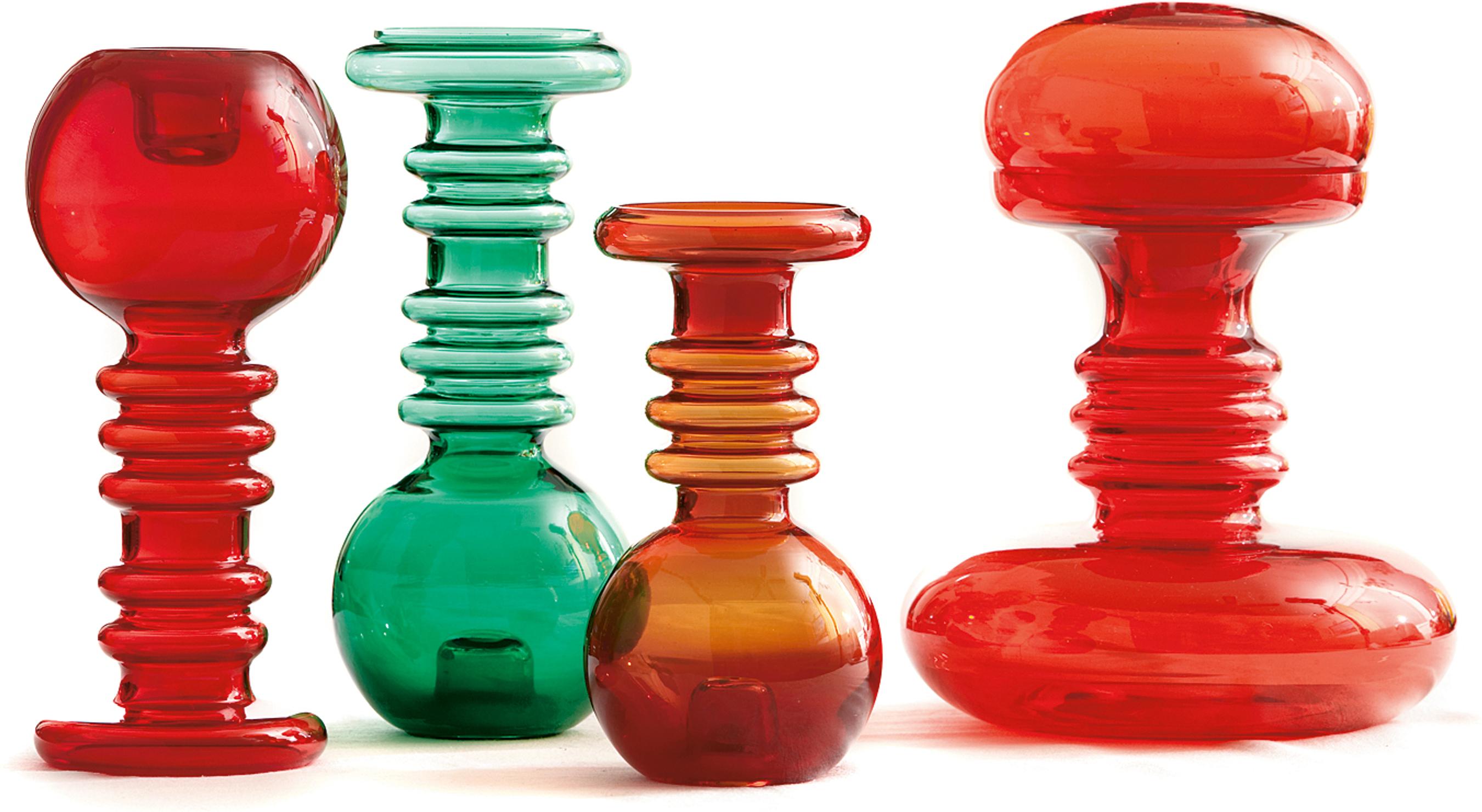
After graduation, Aladin got a job at the Arabia factory, which was already familiar to her. She enjoyed working there but soon left the clay dust and pottery wheels behind when she heard that Aero was looking for Russian-speaking flight attendants for their Moscow route. The temptation to travel became too great. Aladin recalls that Aero’s selection course was much tougher than the one organized by her school, and the job wasn’t among the easiest either. At one point, Aladin worked as a radio telephone operator in the cockpit and interpreted all conversations between the pilots and air traffic control.
One day, a friend of Tamara Aladin wondered why there were no small, delicate cognac glasses designed specifically for women; then the friend urged Tamara to draw one. She grew enthusiastic, sketched a few other items too, and went to Riihimäen Lasi’s office in Helsinki. There, they promised to send her drawings to Riihimäki for review, and soon she received a warm invitation from the factory to discuss the designs further. Shortly thereafter, Aladin was holding in her hands the most important work contract of her life. At that time, she knew nothing about glassmaking.
Aladin began working as a designer at Riihimäen Lasi in 1959, but getting acquainted with glass manufacturing techniques and production processes took her a few years. At that time, the Riihimäki collection featured many glass sets and vases by her far more experienced colleagues, Helena Tynell and Nanny Still.
On April 6, 1965, the local newspaper observed that the artist had moved beyond her experimental phase and that a clear, naturalistic line was emerging in her work: “Tamara Aladin’s imaginative world is rich, and her hereditary intelligence is best shown in her utility glass and goblet series.”

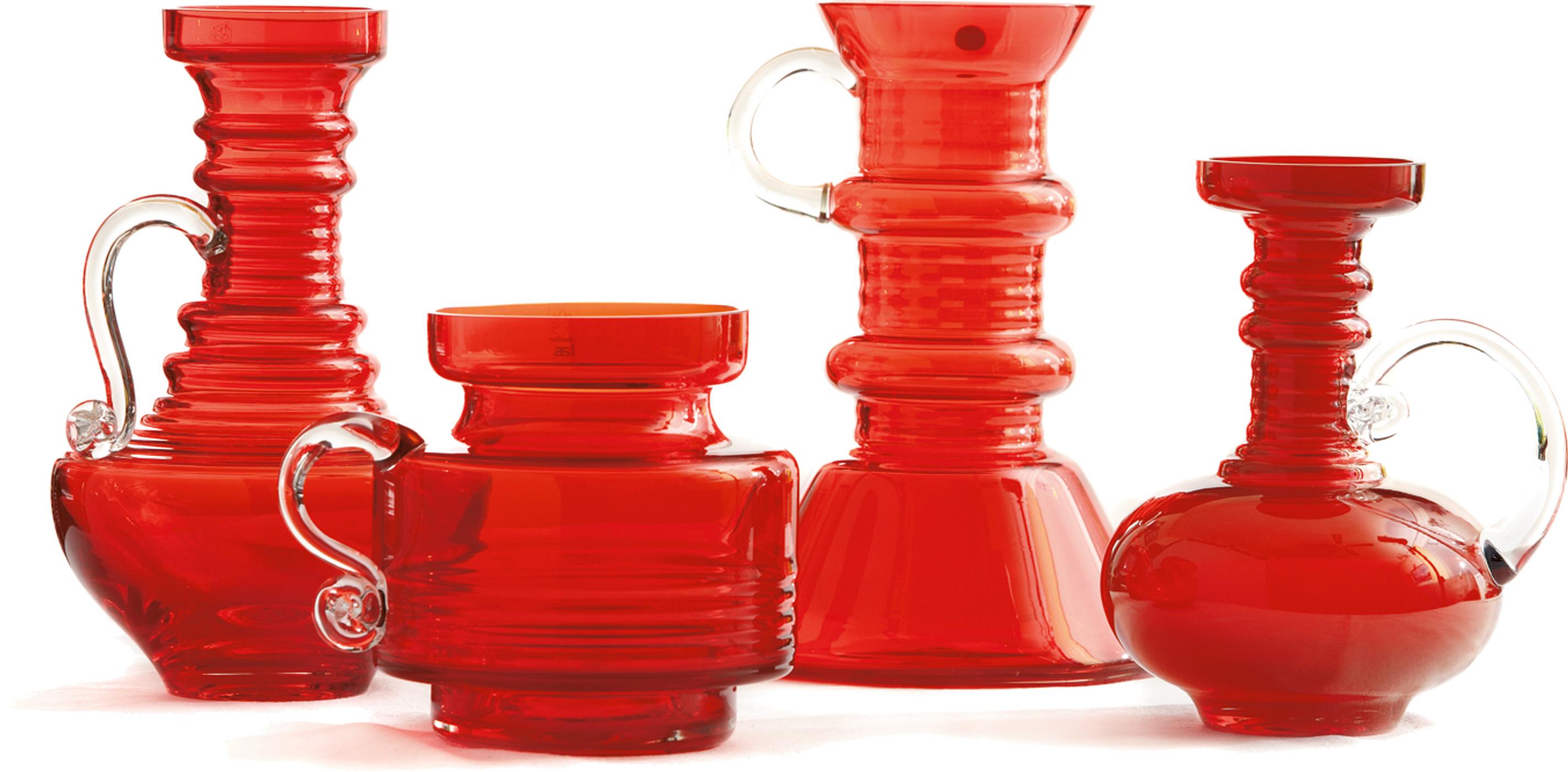
Enchanted by the Blue Mosque
In addition to glass sets, Tamara Aladin created dozens of vases and pitchers. A single series could include up to 15 pieces, from ashtrays to salad bowls and from bottles to candlesticks. The vases and pitchers were made by blowing glass into molds, and the process included only little handwork, mainly limited to bending the necks of vases or attaching handles to pitchers.
As Finnish exports began to gain momentum, especially to West Germany and Great Britain, Aladin, Helena Tynell, and Nanny Still produced new collections without pause. However, they did not work together; each developed her designs independently.
Aladin focused on export collections, and the pace was so intense that she later found it impossible to recall what idea or inspiration sparked each design. She didn’t even remember exactly everything she created in those years.

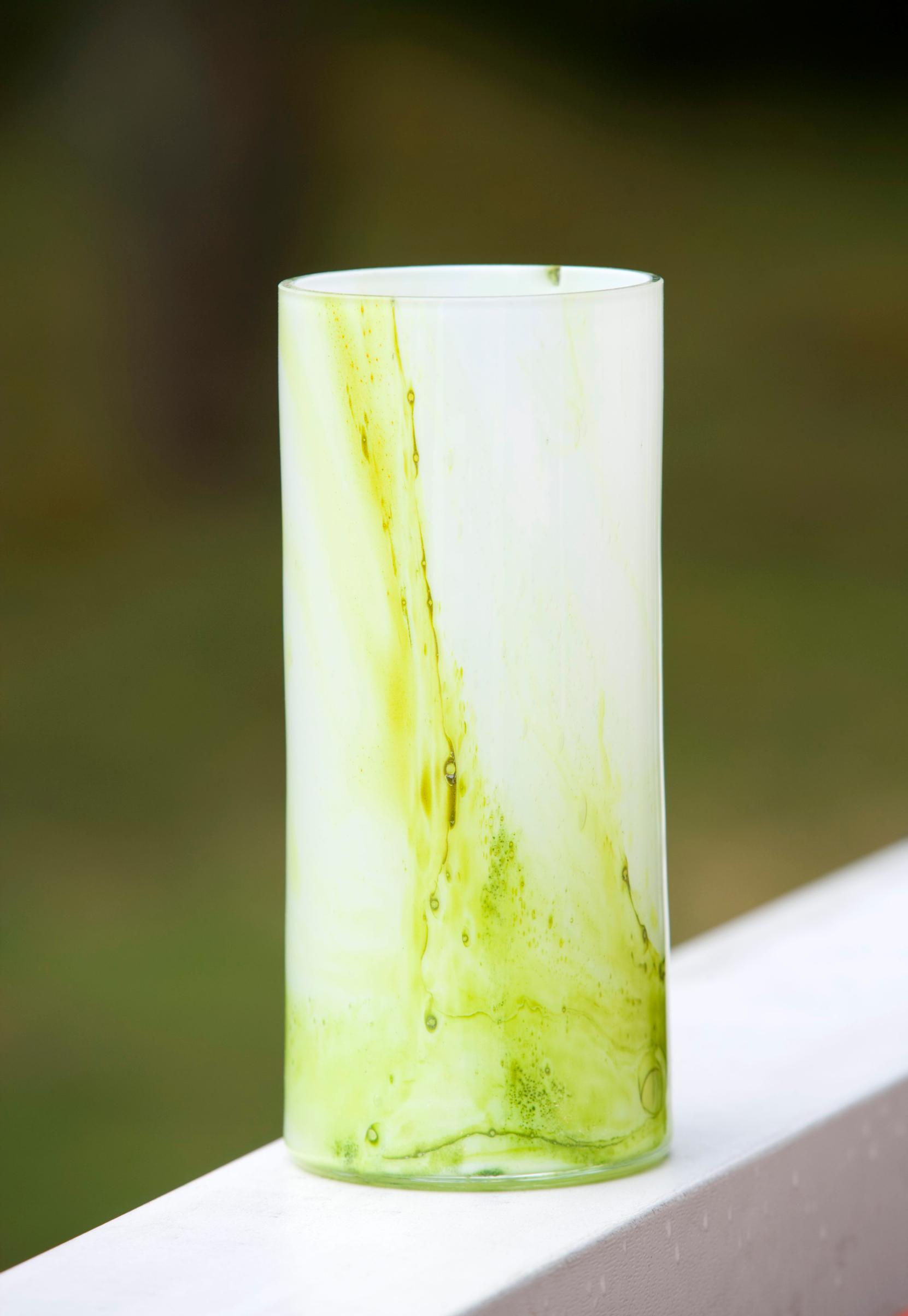
One exception is the Coral series, released in 1975, which combines opal glass with cobalt (appearing blue) and chrome (appearing green). It was born when Aladin was enchanted by the color spectrum of Istanbul’s Blue Mosque and other historical buildings in Turkey and wanted to convey that impression back home. The vase was very inexpensive to produce, which was considered an advantage at Riihimäki.

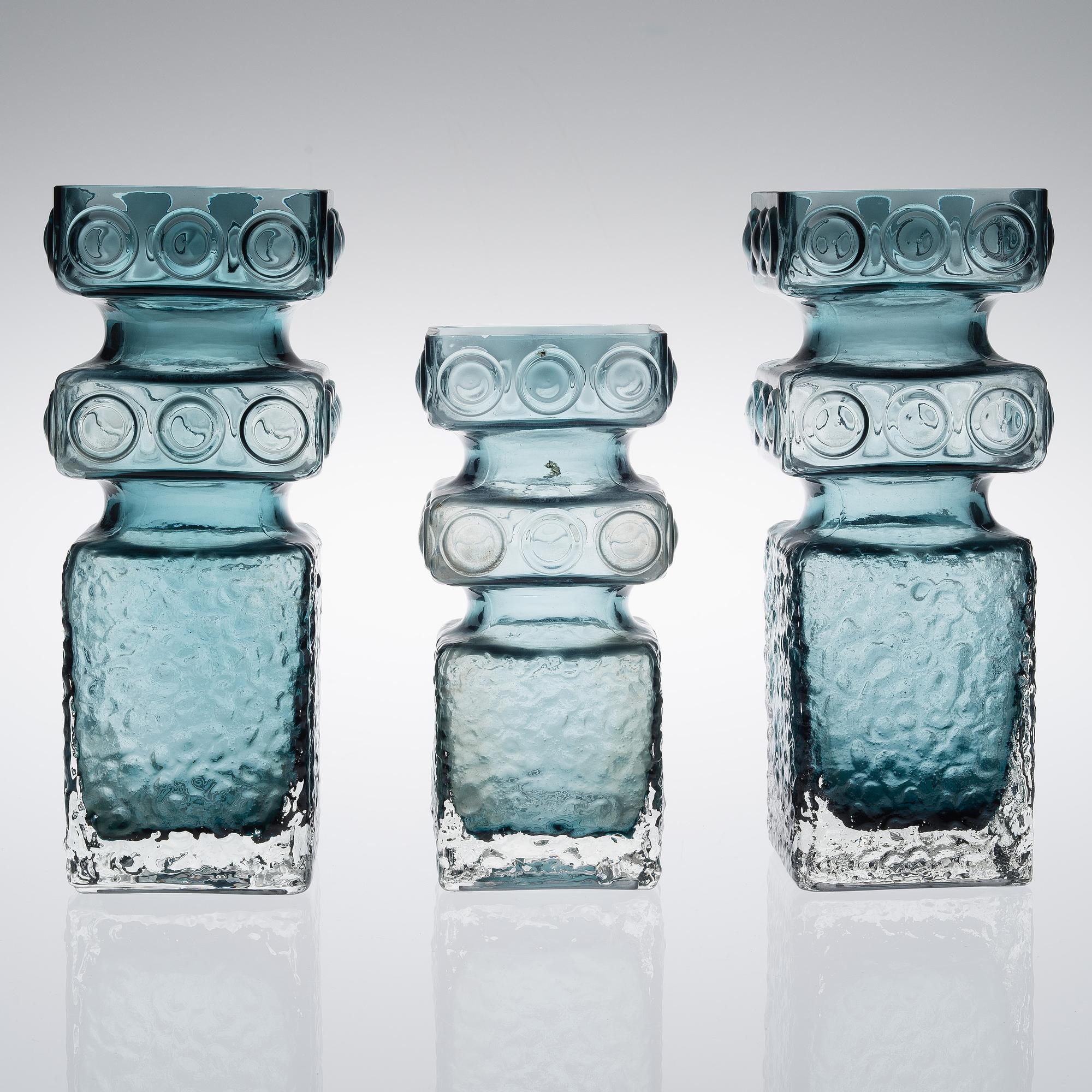

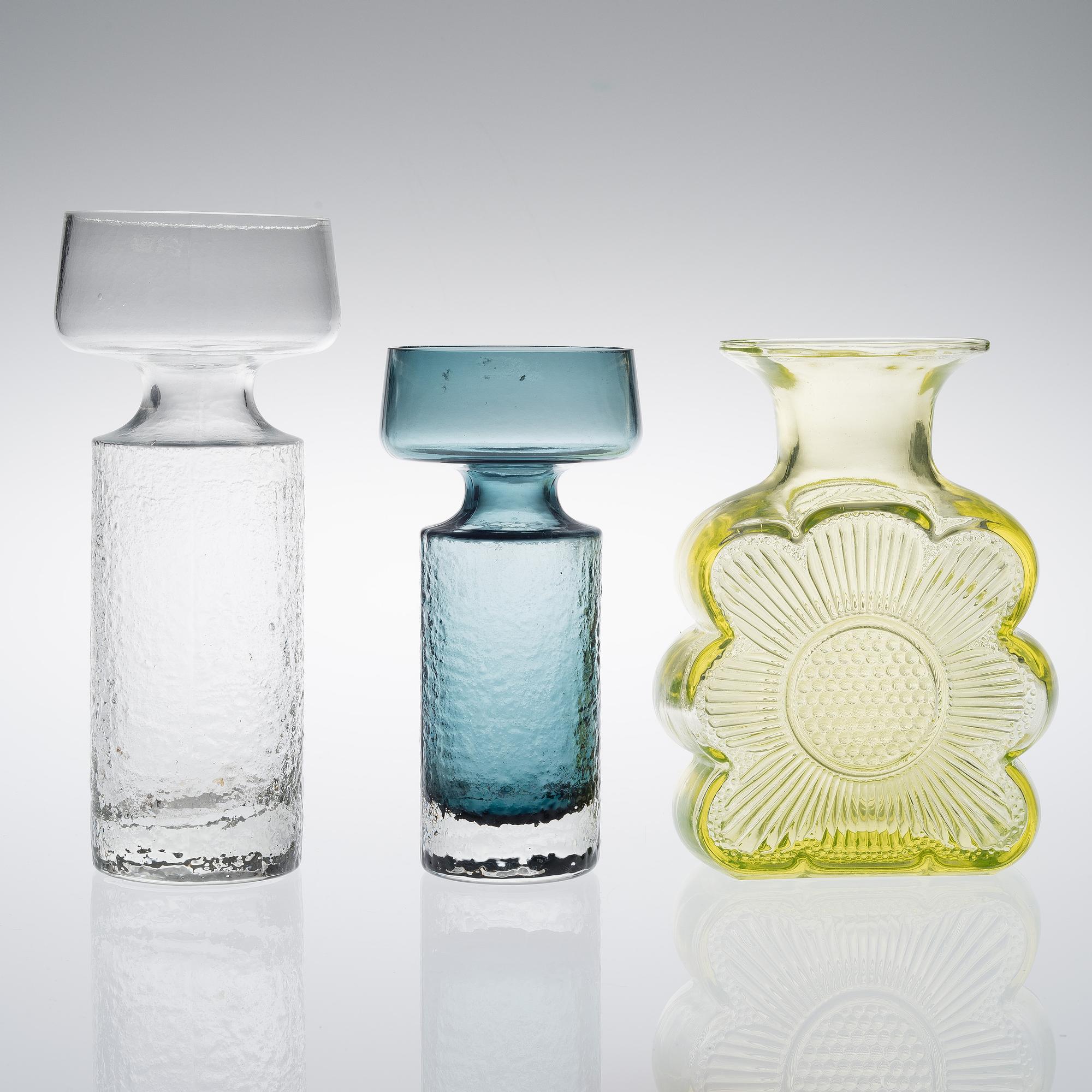
Nocturnal ideas
The designer’s work was generally quite free. Tamara Aladin didn’t sit in design meetings but would pop into the sales or export managers’ offices anytime to see what they thought of a particular piece. The factory’s experienced workers helped her solve technical issues.

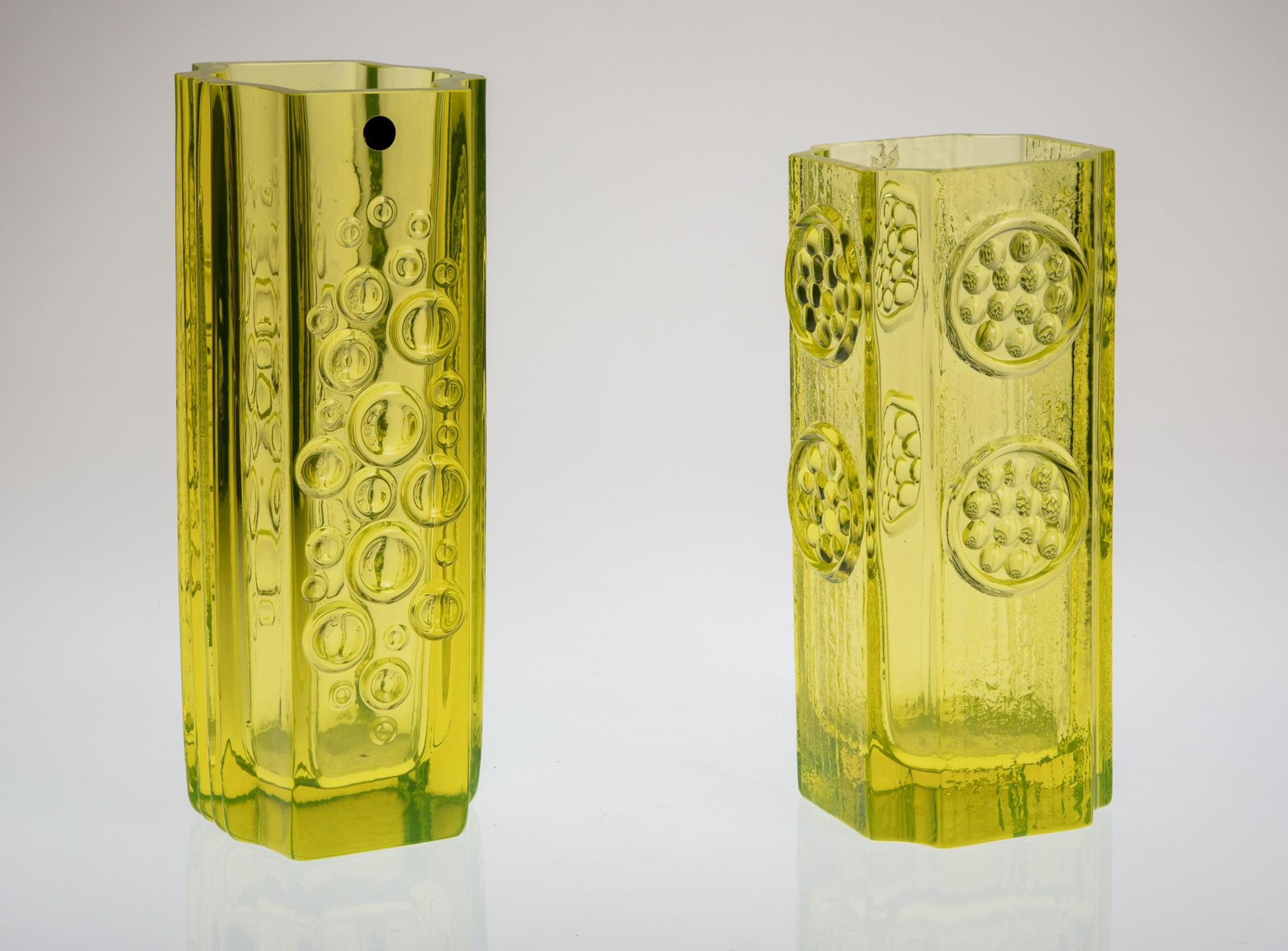
In practice, Aladin’s freedom wasn’t that absolute. When the German sales representatives arrived at Riihimäki, they always had a stack of requests with them. Meetings often ran into the early morning. The best ideas surfaced after official discussions had ended, dinner had been had, and the dancing was done. In the small hours, new ideas would bubble up over nightcaps, and Aladin might start sketching right away. In the morning, she’d show the sketches and ask, “Is this what you meant?” The Germans were expecting something they called Scandinavian Design, and they felt Riihimäki’s output fit that style perfectly.
However, Aladin felt the factory was often making nothing but Central European kitsch. They didn’t produce art glass for the Germans, and she didn’t want her signature on most designs. She counts her 1965 Kajo (“Glow”) vases, which were only ever produced in small quantities, among her best art glass pieces. New export vases were shown either at the Frankfurt spring or autumn fairs. Some lines sold so well that they were then offered in Finland, too.

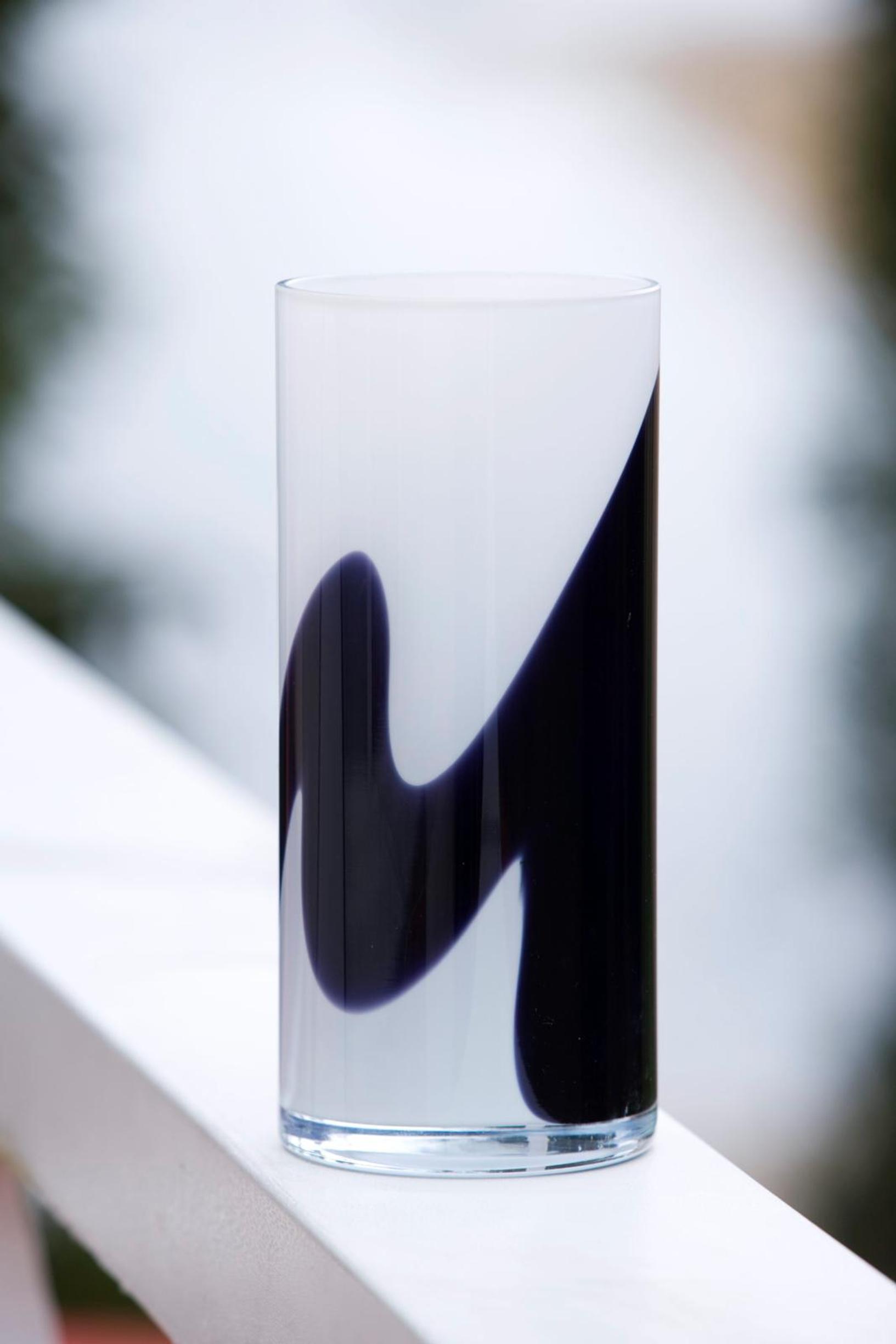

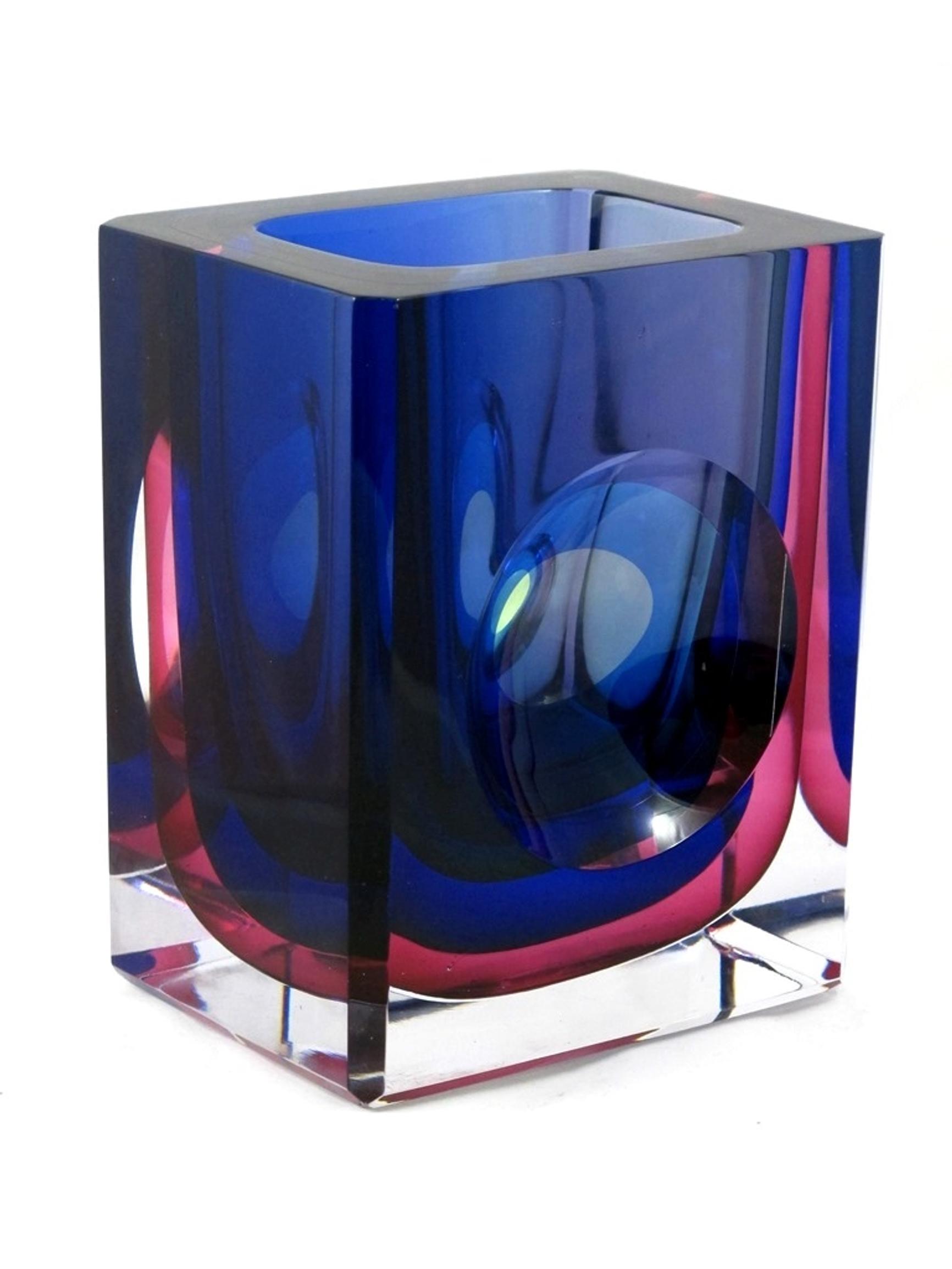
Besides its variety, Riihimäki’s lineup was known for its vibrant colors. In the 1972 sales catalog, official shades included yellow, cerium yellow, amber, neodymium violet, mazarin blue, chestnut brown, clear, blue, and olive, along with ruby, which was very popular on the export market. In reality, there were many more shades available.
These color names might seem unusual, but the names of the vases and glass sets are nothing if not magical. However, Aladin happily distanced herself from the Carmens, Cleopatras, Amulets, and Dalars, as she left the joy of naming to others.

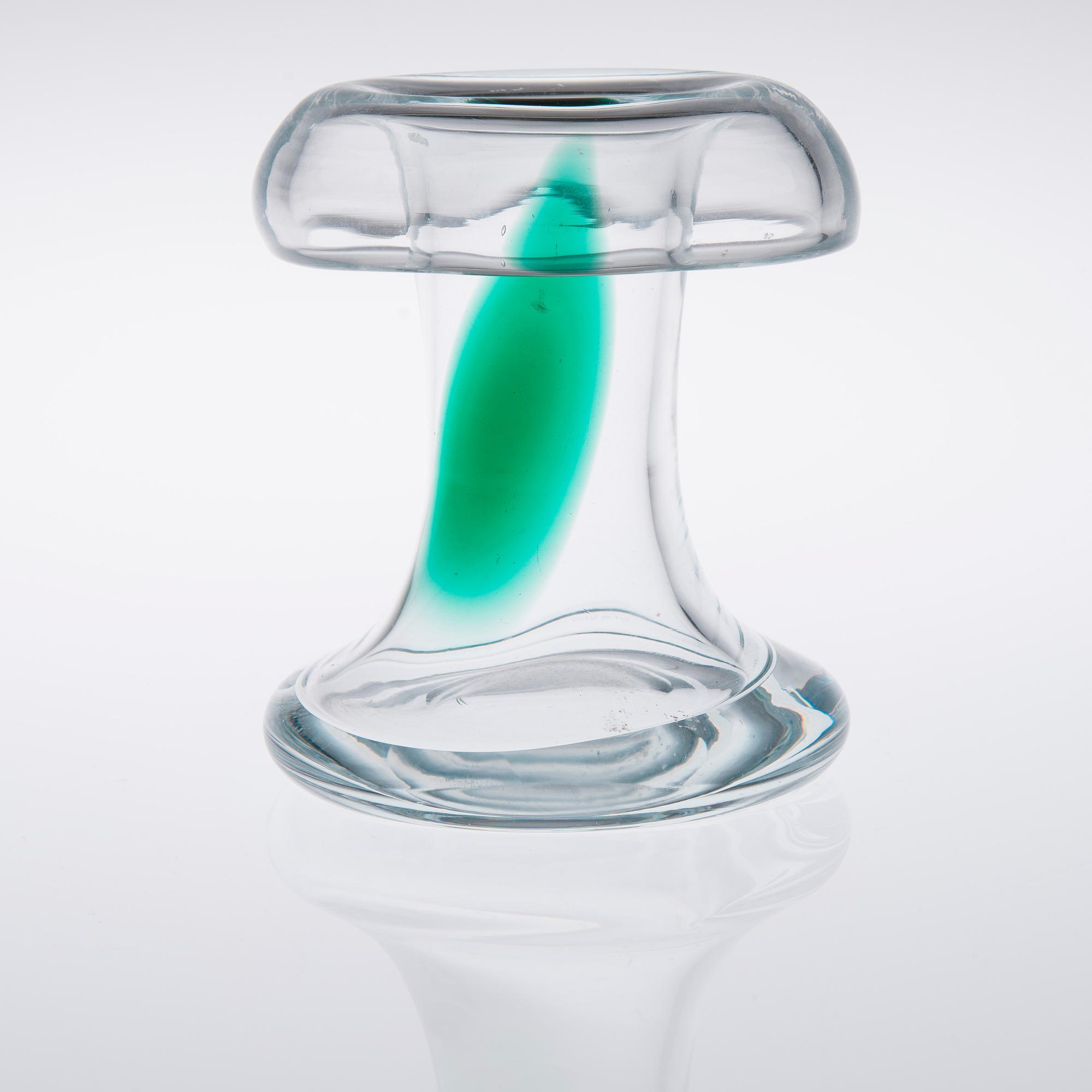

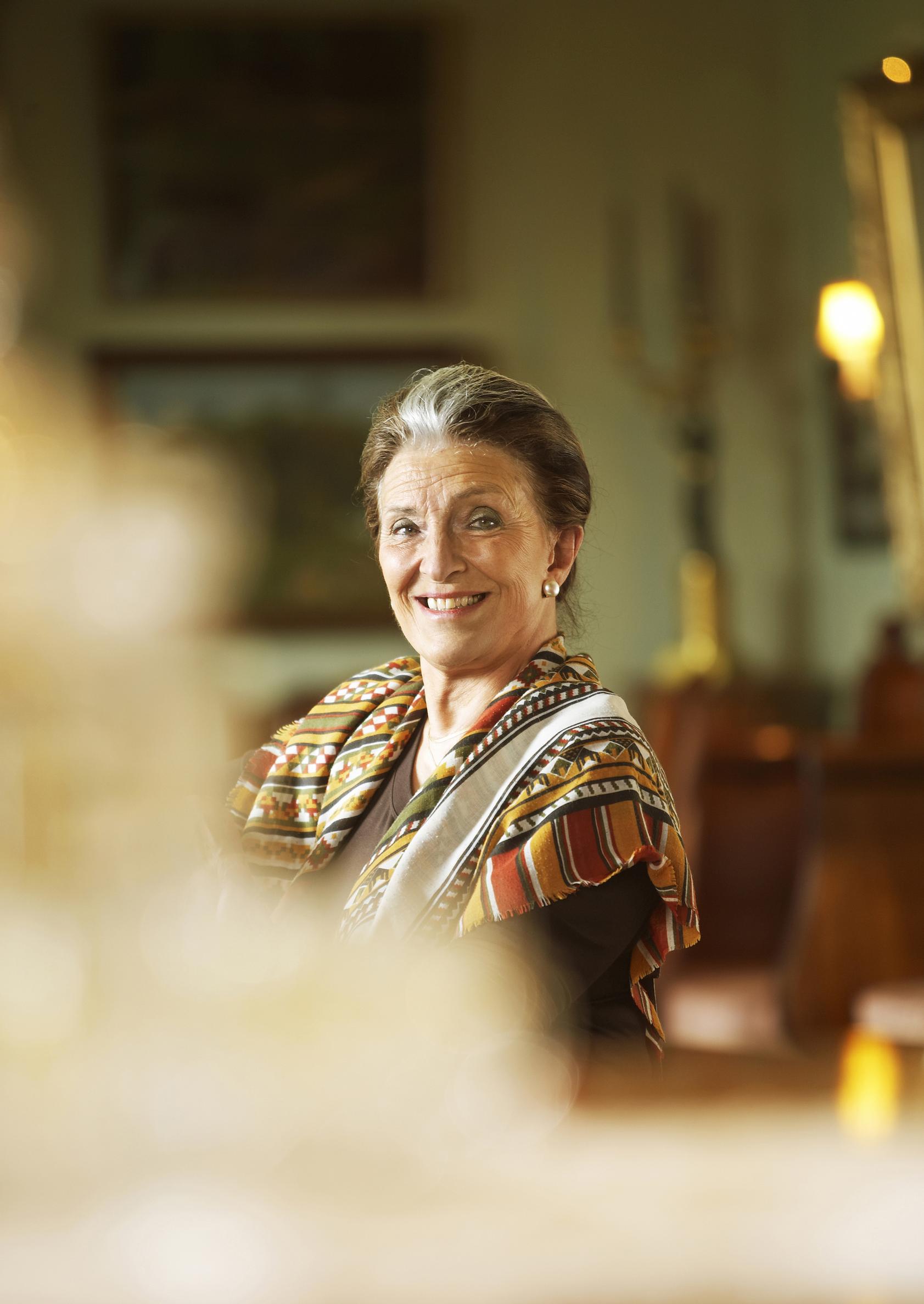
Change of direction
Tamara Aladin’s time at Riihimäki ended in 1976. Riihimäen Lasi had entered a downward spiral for several reasons. Exports had failed when glass prices had to be increased, and the 1973 energy crisis had forced prices up even further. Perhaps the worst blow was Finland’s trade agreement with the EEC, after which cheap foreign glass flooded the country. Pressed glass production ended in 1975, and the following year saw the end of mouth-blown glass, or art glass production.
However, according to Aladin, the work was wonderful right up to the end. For the most part, she was allowed to do only what she herself enjoyed. Aladin had even signed an agreement with Riihimäen Lasi that would have allowed her to continue designing after 1976, but nothing came of it. The circumstances had completely changed.
Life began to follow its own course, and farm management and horses filled Aladin’s time. She found that horseback riding in nature was the best way to maintain good health. She enjoyed a piece of raw liver with her cats daily and also had one cognac in the afternoon, for health and longevity.
Tamara Aladin died on March 9, 2019, at the age of 86.
The history of Riihimäen Lasi glass factory
- The Riihimäen Lasi glass factory was founded by Mikko Aadolf Kolehmainen and Adolf Paavali Kolehmainen. The first items were blown on July 26, 1910.
- Initially, production included wine and liquor bottles, water and milk bottles, cut crystal, vases, and glass sets. Riihimäki was a very significant manufacturer of pressed glass.
- The first semi-automatic blowing machines were acquired in 1919.
- By the 1920s, Riihimäki was Finland’s largest glass factory and a pioneer in glass design. Lighting glass production was concentrated in the Kauklahti glass factory, which Riihimäki bought in 1927.
- In 1928, Riihimäki held a design competition, which was won by Henry Ericsson. In addition to him, Riihimäki also employed designers Tyra Lundgren, Eva Gyldén, Arttu Brummer, Gunnel Nyman, Yrjö Rosola and Antti Salmenlinna.
- The factory was modernized in 1935–36.
- The name was changed to Riihimäen Lasi Oy in 1937. (Oy is the Finnish equivalent to Ltd or Inc.)
- Window glass production began in 1939.
- In 1949, Riihimäki held a Nordic glass design competition, leading to Nanny Still being hired as a designer.
- The Kauklahti factory was closed in 1952.
- Sakari Pykälä (1926–96) worked as a designer at Riihimäki from 1954 to 1955.
- Tamara Aladin (b. 1932) started in 1959.
- In 1963, the Iittala glass factory and Riihimäki signed an agreement according to which lamp and lighting glass production was concentrated in Iittala, while crystal and pressed glass remained in Riihimäki. Production was adapted to suit overlay glass vases, which used a combination of opal and clear glass, similarly to lighting glass.
- Erkkitapio Siiroinen (1944–96) began as a designer in 1968.
- Window glass production ended in 1975.
- Mouth-blown work ended on November 30, 1976; art glass production stopped as well.
- Riihimäen Lasi operations ended in 1990. In their final years, they produced automatically manufactured utility glass, known as Kotilasi (“Home Glass”).
- The city of Riihimäki is a great place to find old Riihimäki glass. You can spot it at many local flea markets—one of them has 600 sales tables—as well as in second-hand shops. Vintage dealers from across Finland also search these same spots.


